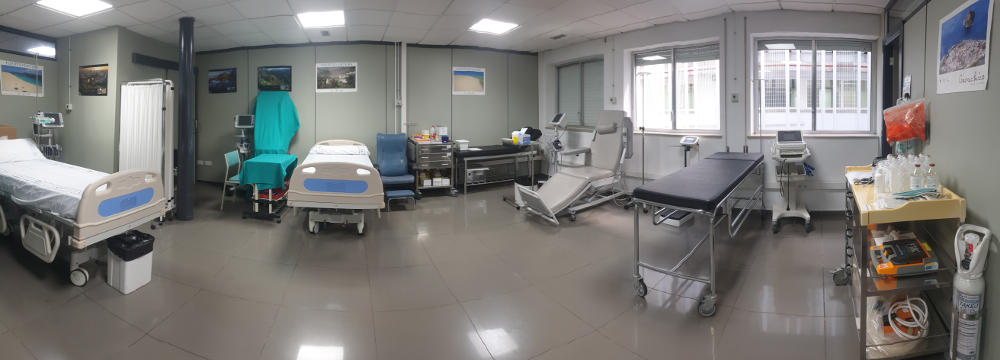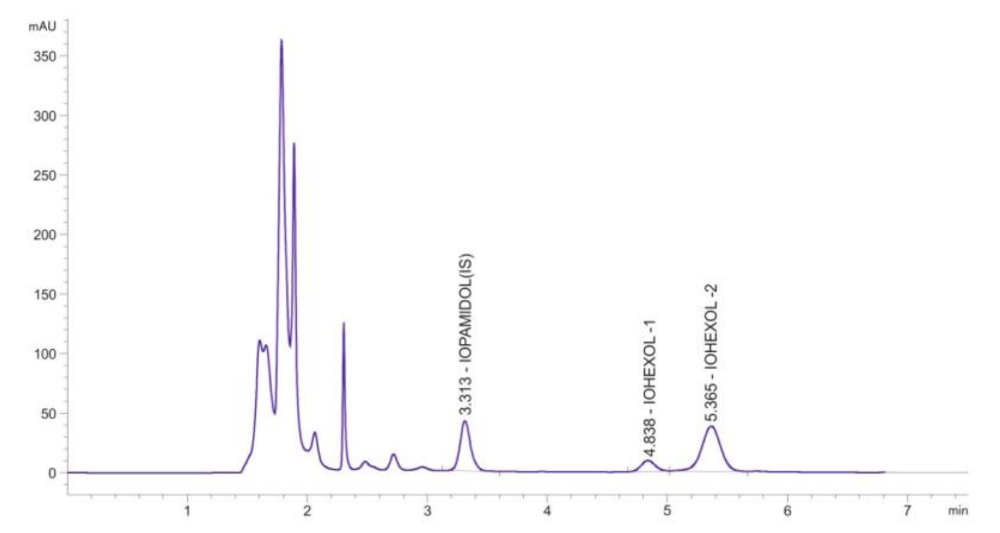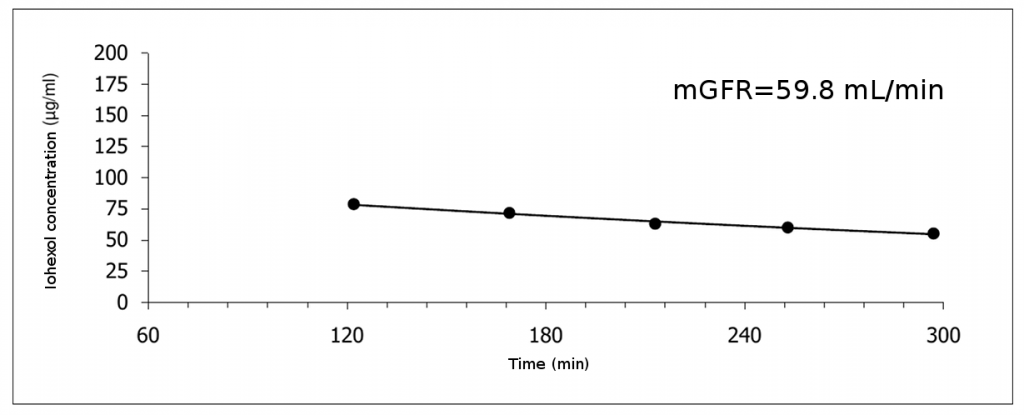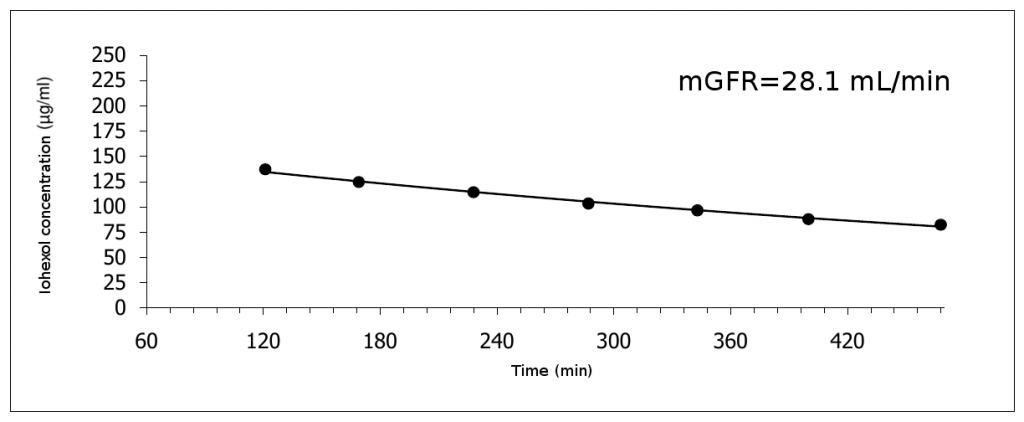Renal Function Measurement

Renal function is measured by direct methods using exogenous markers (inulina, 51Cr-EDTA, Tc-99mDTPA, iothalamate and iohexol) that are intravenously injected to the patient . Then, after a period of distribution, the clearance of the marker from blood to urine is pharmacokinetically analyzed during the elimination phase. The most commonly used markers are iothalamate, widely used in the United States, and iohexol, mainly used in Europe. In the LFR, we measure renal function by means of the plasma clearance of iohexol.

The procedure involves the i.v. injection of a small dose of iohexol (5 mL of Omnipaque 300, GE Healthcare) to the patient, waiting two hours to allow the marker distribution throughout the body. Then, we extract 5 or 7 serial blood samples every 30 or 60 minutes depending on whether the patient’s estimated renal function is greater or less than 40 mL/min, preserving them until analysis in the laboratory by liquid chromatography (HPLC-UV)


